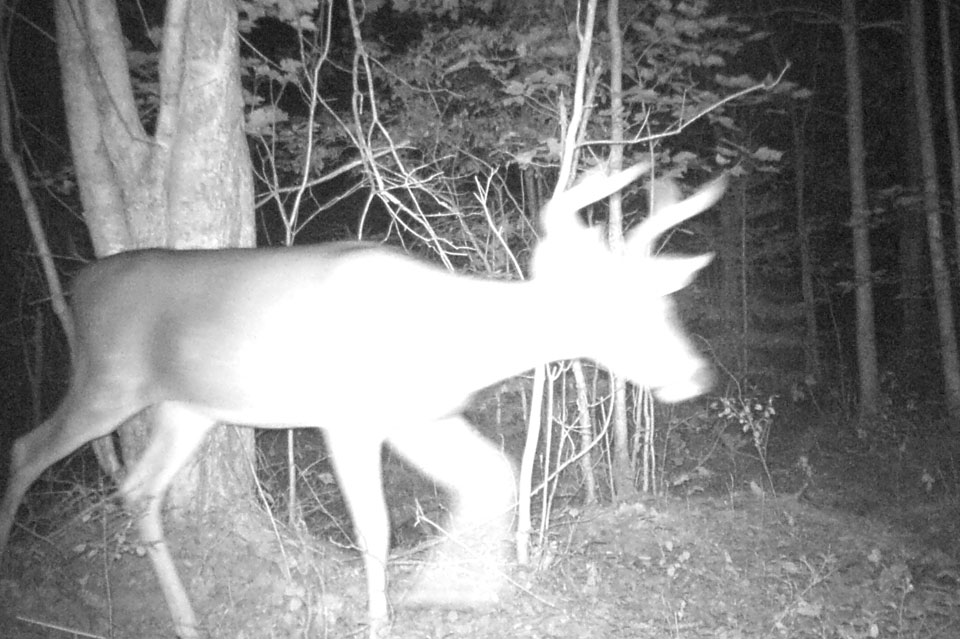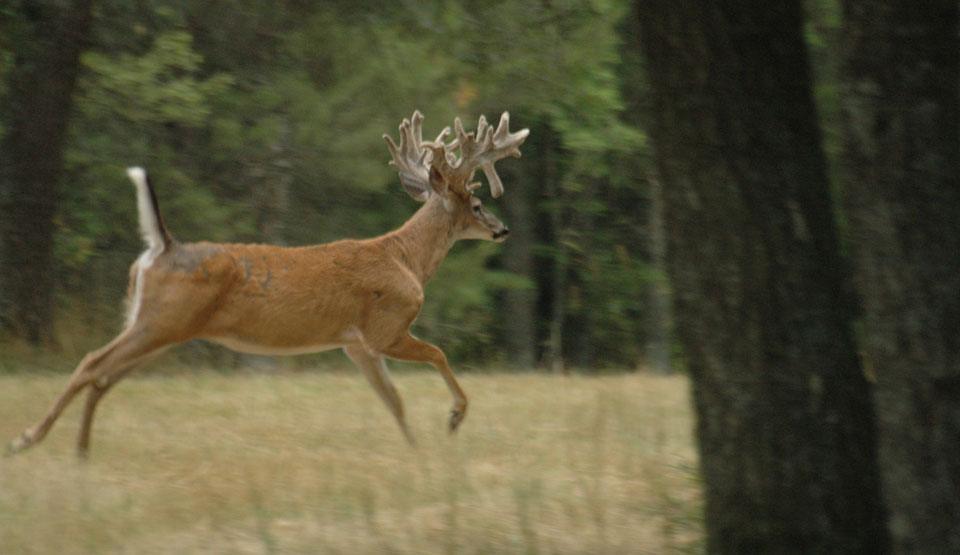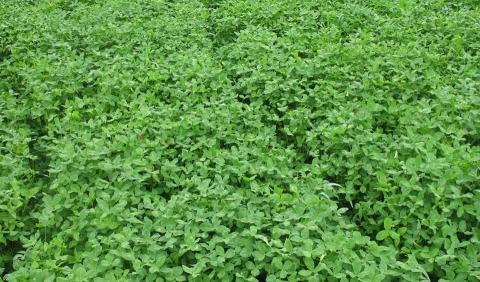Bob Humphrey
White-tailed deer are fascinating creatures and hunters go to great lengths to learn as much as they can about them. Because the more knowledgeable you are about your quarry, the more successful you are at reducing them to possession.
1. Rumen’uff for Four
Deer have a very complex digestive system including a four-chambered stomach much like that of a cow. One chamber, the rumen, contains beneficial bacteria that partially digest cellulose fiber from the coarse, woody browse that makes up much of a whitetail’s winter diet. Sudden, drastic food changes, like feeding corn in the middle of winter can dramatically upset this complex system causing deer to literally die with a full stomach.
2. Look A-round
Unlike ours, which is round, a deer's pupil is more oval, almost rectangular. This minimizes light energy from above and below while maximizing light from the horizon, where danger lies. As a result, their visual acuity is greatest on a horizontal plane and poorer above and below, which may explain why they don’t see elevated hunters as well...unless they look up.
3. Reflections
Deer have a reflective layer on the retina called the tapetum lucidum - the organ that causes eye-shine when illuminated. When light strikes the retina, some is absorbed by visual organs called rods and cones. The rest strikes the tapetum lucidem and is then bounced back over rods and cons a second time, giving deer about 18 times greater ability than humans to see at night.

4. Hair Raising
Like all mammals, deer have tiny arrector pili muscles attached to the base of each hair follicle. Contracting them causes hair to stand on end - what we call goose bumps or chicken skin. Deer can do this intentionally, and sometimes do. It is typically a sign of aggression, presumably making the animal look bigger and darker, and therefore more intimidating.
5. Hello in There!
In late summer, a whitetail sheds is summer coat of thin, reddish-brown hairs and it is replaced with a dense coat of darker, hollow hairs. The darker color makes hairs more durable and absorbs more solar radiation. The hollow hairs then act as insulation to keep deer warmer and make them more buoyant.

6. The Water’s Fine
And yes, deer can swim quite well. They have no problem crossing rivers, ponds and lakes and even swimming in coastal bays and sounds, making more inaccessible islands a great place to hunt.
7. Home Turf
White-tailed deer are not territorial, meaning they do not defend a specific piece of ground. They do however have a home range, which they occupy throughout most (90 percent) of the year. Within that is a core area where they spend most of that time.
8. MIA
While many hunters think hunting pressure drives deer off their land, much the opposite is true. Research has shown that as pressure increases, deer move less during daylight and more in thick cover but remain relatively close to their pre-hunt home range and core areas.
9. B.O.
Self-proclaimed experts throw out all sorts of numbers on how much better a deer’s sense of smell is than ours but we really don’t know; we just know it’s better. And in addition to being able to detect odors, they’re also far superior in interpreting them. It is believed that from a single whiff of urine a deer may be able to recognize the sex, fitness, status and possibly even individual identity of the deer that deposited it.
10. Lookout Below
While they lack the power of reason, whitetail deer do have the ability to learn, and one study found evidence that mature bucks learn to avoid permanent stands during daylight hours.






























